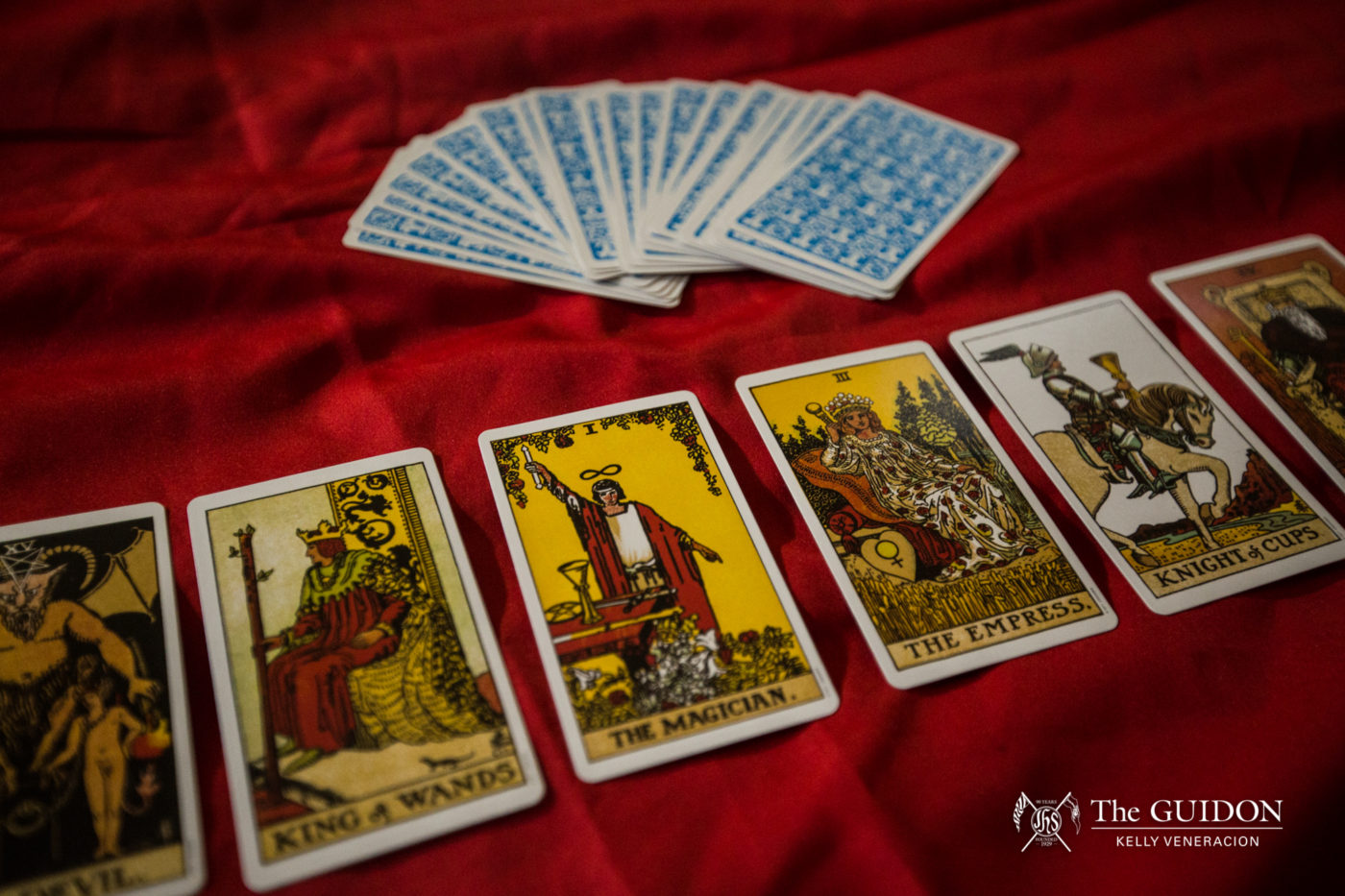THE 78 cards in a tarot deck seem innocuous—at least until a tarot practitioner draws from the deck and explores the various possibilities each hold. As the new year rings in, tarot reading not only serves a tool for prediction, but also as a potential new hobby for those who seek to widen their horizons.
Tarot reading’s origins date back to the 1300s in Europe, yet its prevalence in the Philippines is a different story. Here, institutions that conduct training for tarot reading and offer tarot reading are not abundant. While tarot cards are often associated with prediction and interpretation, the more vital side of the cards reveals that its true power rests not in fortune-telling, but in its potency as a guide for one’s life and a companion for one’s curiosity.
The makings of misconceptions
Though tarot readings may serve as a source of insights and life advice, professional tarot reader Henri Igna shares that tarot’s unconventionality and association to the occult may be the reason it is not widely practiced in the country. There are some setbacks to learning about tarot due to the Philippines’ Catholic orientation, which depicts tarot in a taboo light. “Growing up in a predominantly Catholic country, it is hard to access resources and materials about [tarot] anywhere without stigma,” he says.
Beyond those in the Philippines, the Catholic Church as a whole hasn’t been as accepting of tarot card reading. Pope Francis himself has been very critical of it, even referring to tarot reading as “an idolatry of our times.” The Catechism of the Catholic Church rejects all forms of divination, including prediction of the future, claiming that these encourage “a desire for power over time.”
While Igna recognizes that there are daunting images in tarot cards—in particular the Death and The Devil cards—each tarot reading is meant to encourage individual transcendence by allowing one to reconnect with their subconscious and surroundings. “The art of tarot is more than memorizing the cards’ meanings but knowing how to connect each one in a spread for a more holistic reading,” Igna says.
In contrast to the church’s contention against predicting the future, what tarot cards say about one’s future is not set in stone. Tarot card reading is about finding patterns in daily life and how these routines may affect the future; an individual can still choose to alter those patterns. “If you got to this point because of certain patterns in your past and you don’t change anything, you likely got to that point because you’re following the same pattern,” Psychology Department Lecturer and tarot card reader Pia Lina explains.
Connecting with the subconscious
Despite its unconventionality, tarot card reading may also be explained by concepts in the social sciences, particularly through psychological theories. Lina believes that each tarot card is a reflection of renowned psychoanalyst Carl Jung’s archetypes or large patterns of ideas in our collective unconscious. The collective unconscious is “all the memories of all sapient beings ever,” which has then convinced Lina that tarot archetypes are rooted in the interpretation of human experience. Carl Jung also emphasizes the finding of the “authentic self,” which Lina affirms by claiming that one can increase their self-awareness as they interpret and relate to the meanings of cards that appear in a spread. She asserts that getting one’s tarot read and learning how to read the cards themselves can aid one in “finding their truer self and [making] meaning of their lives.”
“To know yourself and to be authentic, to get to know your truest self; not everybody will find that through tarot cards, but the people who are drawn to it will likely be helped by it,” she says.
Upon exploring the scientific roots of such a mystical practice, it cannot be denied that there are still certain instances surrounding tarot that are rather baffling. For instance, the order by which cards are drawn and how one out of 78 cards gets selected cannot be explained by science.
Demystifying the meanings
Tarot reading then becomes a pursuit that all that are interested can invest in, and the community continues to make it possible for even beginners to explore the field. The practice has been made even more accessible to members of this generation, with Twitter accounts and YouTube channels dedicated to sharing predictions. Practitioners also have a community of their own where they share thoughts and swap readings with one another.
In order to help those interested in tarot, learning institutions such as Mysterium Manila have been established to hold lessons, workshops, events, and bazaars to organize opportunities to make a living out of the skill.
Furthermore, Igna asserts that tarot reading is for anyone. “We [in the tarot community] always believe that tarot reading can be learned. Every one of us can,” he assures. “And the fact that you’re already interested in learning means something already.”
Overall, the true essence of tarot reading is much more than just unfounded guesses and pure coincidences. It’s an intuitive process, with each card’s teachings intended to be taken out of the world of intellectual concepts and into the world of practical application.
Although what the cards have to say aren’t the end-all, be-all of things, they certainly could serve as a much-needed source of clarity in an increasingly disorderly world. The choices individuals make based on the cards could positively or negatively affect them and the way they interact with others, creating a seemingly endless ripple effect—all from the countless possibilities of a deck of cards.







